Conservation status DOM Scientific name Equus ferus caballus Rank Breed | Origin Norway | |
 | ||
Other names Norwegian Fjord Horse, Fjording, Fjordhest, Fjord Horse, Fjord Distinguishing features Similar Haflinger, Gypsy horse, Icelandic horse, Friesian horse, Appaloosa | ||
Norwegian fjord horses compared to other breeds with tess bailey and zach hedberg
The Fjord horse or Norwegian Fjord Horse is a relatively small but very strong horse breed from the mountainous regions of western Norway. It is an agile breed of light draught horse build. All Fjord horses are dun in colour, with five variations in shade recognised in the breed standard. One of the world's oldest breeds, it has been used for hundreds of years as a farm horse in Norway, and in modern times is popular for its generally good temperament. It is used both as a harness horse and under saddle.
Contents
- Norwegian fjord horses compared to other breeds with tess bailey and zach hedberg
- Fun facts about norwegian fjord horses
- Breed characteristics
- Recognized shades
- Kvit white
- History
- Uses
- Registries
- References
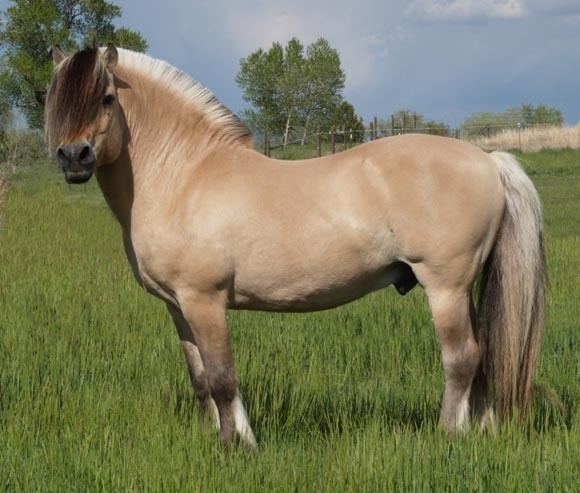
Fun facts about norwegian fjord horses
Breed characteristics

There is no variations. These shades have been officially recognised in Norway since 1922. White markings are discouraged, though a small star is acceptable. The hooves are most often dark, but can be a lighter brown colour on lighter-coloured horses.
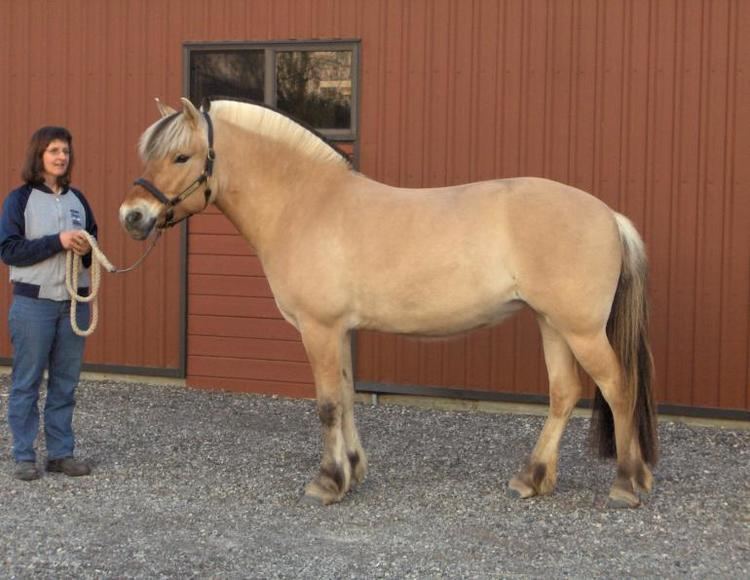
The dun colour itself is a dominant dilution gene. All Fjord horses are dun; therefore they are homozygous or nearly so for dun colouration. No equine coat colour genetics studies have been done specifically on Fjord horses. But, if Fjord horses were not homozygous for the dun gene, then a dark-coloured, non-dun individual could occasionally occur in the breed. However, this is very rare or nonexistent today; dark cropouts existed in the past, but breed standardisation has favoured duns and the colour is now produced consistently.
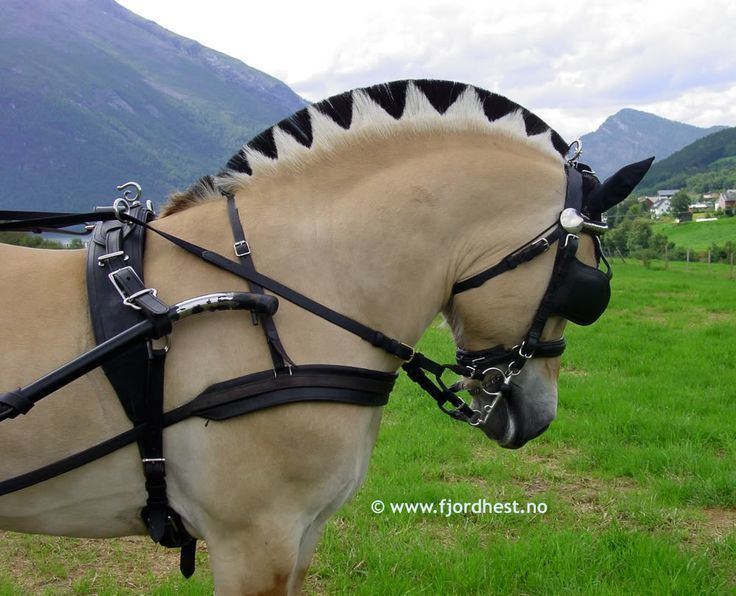
The primitive markings associated with the dun gene are often quite vivid in the Fjord horse. These include the dorsal stripe, darker mane and tail, horizontal stripes on the back of the forearms, and, in rare cases, transverse striping across the withers. Some Fjord horses have small brown spots on the body or the head. These spots are called "Njal marks" after one of the foundation sires of the contemporary Fjord horse, who had such markings. Fjord horses are also consistent for having pangare traits: lighter hair on the muzzle, belly, inside of legs, and over the eyes. Some Fjord horses also carry the cream gene, which combines with the dun gene to create the lighter shades of the breed.
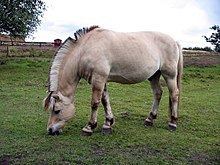
Fjord horses have a significant amount of lighter hairs on the outside edges of the mane and edges of the tail, and when teamed with the darker-coloured centre of the mane common to most colour shades gives a two-toned look that is more dramatic than seen in dun horses of other breeds. Amongst Fjord horse aficionados, the dark section of hair in the middle of the mane are described by the Norwegian terms midtstol, and darker hair in the middle of the tail is called the halefjær.
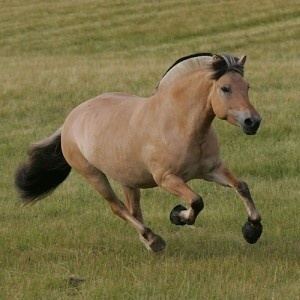
White markings on Fjord horses are rare, they have been noted as long as written records have been kept of the breed. A small star is acceptable, but any other white or pink markings are considered undesirable. The Norges Fjordhestlag (The Norwegian Fjord Horse Association) decided in 1982 that stallions of any age with any other white markings than a small white star cannot be accepted for breeding.
Recognized shades
The Fjord horse breed standard recognises five colours. 90% of all Fjord horses are "brown dun" (the colour called "bay dun" in other breeds). The remaining 10% are either "red dun", "grey" (less often "grey dun", the colour known as grulla in other breeds), or two colours reflecting the influence of the cream gene: "white dun" (or "uls dun") and "yellow dun". The breed registries for Fjord horses encourage preservation of all colours. The dun colour variations can be subtle and hard to distinguish unless horses of different shades are standing side by side. The colour terms are also non-standard when compared to English terminology more commonly used to describe horse coat colours in other breeds. This difference appears to be based in part from being derived from Norwegian language terms, which were set in 1922, and their English translations, which were made official in 1980. While these terms were set before equine coat colour genetics were fully understood, the variations do match up to modern genetic studies as variations of dun colour with the addition of other genetic factors.
Kvit, "white"
Along with the recognised five shades of dun, two cream dilution alleles (CCr) on any other colour results in a horse with a light cream coat colour and blue eyes. This colour is called "kvit" ("white") in Norwegian, and is known as cremello, perlino or smoky cream in other breeds. A dun with double cream dilution will have faint or indistinguishable primitive markings. In the Fjord horse, Kvit was traditionally considered undesirable, and thus is a very rare colour in the breed due to intentional selection against it. Nonetheless, it is a normal colour within the gene pool, as the nature of cream genetics statistically will result in the occasional kvit horse any time two horses that both carry a single copy of the cream dilution are mated, such as an ulsblakk and/or a gulblakk.
History
The Fjord horse is one of the world's oldest and purest breeds. Horses were known to exist in Norway at the end of the last ice age. It is believed that the ancestors of the modern Fjord horse migrated to Norway and were domesticated over 4,000 years ago. Archaeological excavations at Viking burial sites indicate that the Fjord horse type has been selectively bred for at least 2,000 years. The Fjord horse and its ancestors have been used for hundreds of years as farm animals in western Norway. Even as late as World War II, they were useful for work in mountainous terrain. The Fjord horse also has a long recorded history of pure breeding without crossbreeding from other sources.
The Fjord horse is featured as a charge on the coat of arms of the municipalities of Gloppen and Eid, both in Nordfjord.
Uses
The Fjord horse is strong enough for heavy work, such as plowing fields or pulling timber, yet light and agile enough to be a good riding and driving horse. They are also sure-footed in the mountains. Today, the Fjord horse is a favourite at Norwegian riding and therapeutic schools, as its generally mild temperament and small size make it suitable for children and disabled individuals. They are considered very good driving horses, and are commonly used in everything from competitions to tourist transport in Norway. They are also used as a sport horse, particularly in combined driving.
